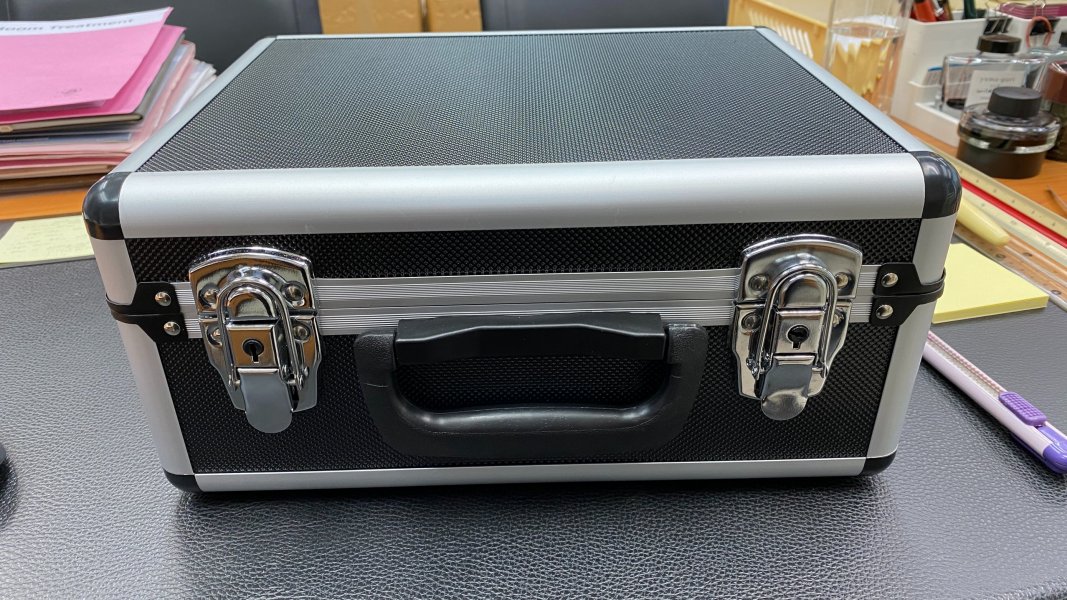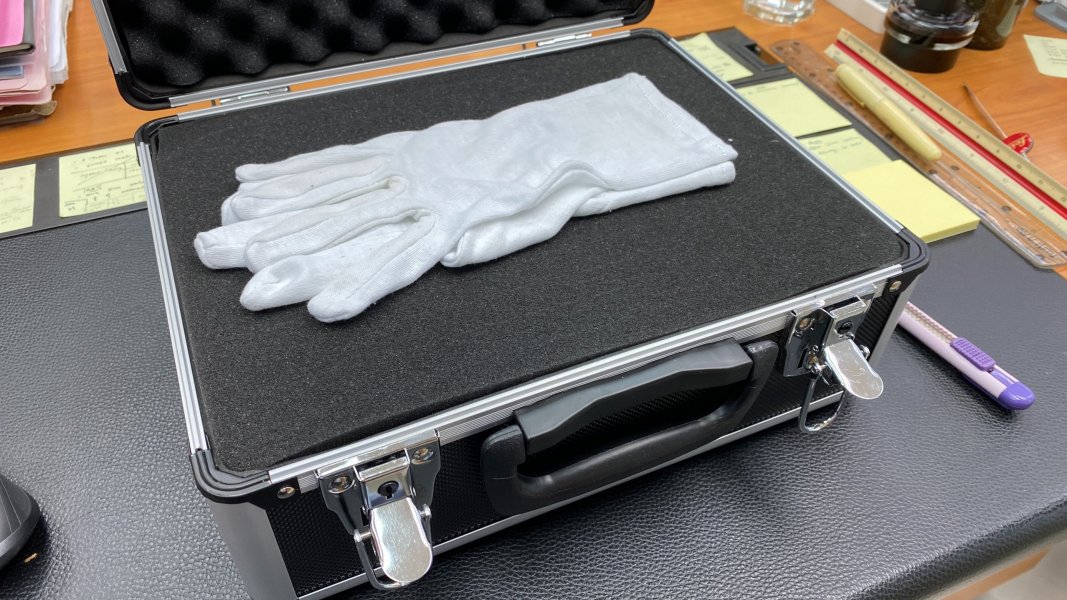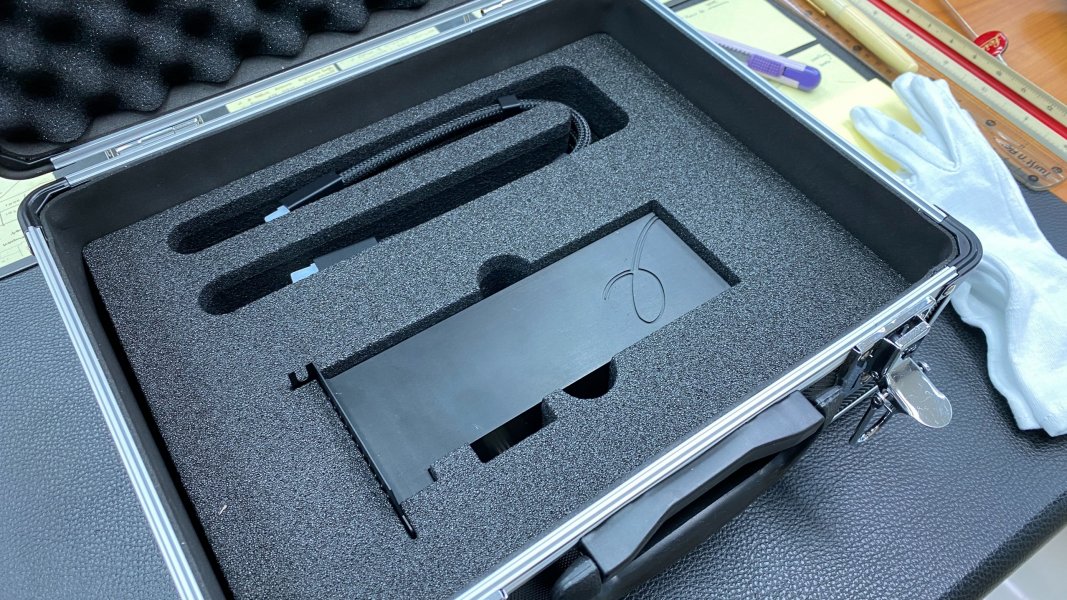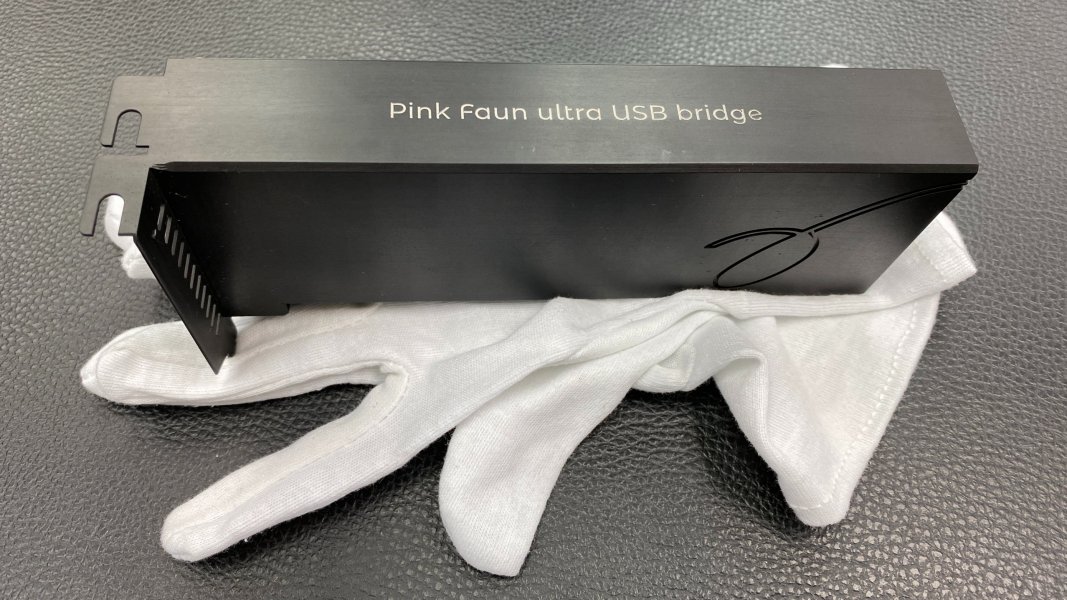Pink Faun Ultra Card / Bridge
It’s been a very long time since I first found out about this remarkable new bridge by Pink Faun. In early 2023 Jord Groen, the proprietor of Pink Faun, informed me that they had been working on a new super bridge for their acclaimed 2.16 Ultra streamer for sometime already, one that encapsulated all they knew of what matters in sound reproduction. And it would be an all out assault on the state of the art, audiophile pinnacle without restriction by cost. Being a long time fan of Pink Faun products, what could one possibly do but to visit them and see it!

This I did in mid-2023 when I visited Rhenen, the home base of Pink Faun, where I had a chance to hear the Ultra USB bridge. The first few prototypes were freshly completed, not burned in fully and recently plugged into their demo system alongside their older V1 USB and i2S bridges. At that time, I preferred the sound of their existing i2S bridge and wrote about it
here. Nevertheless we had a good session listening to music and for me to understand the Pink Faun ethos “no sound, just music”. They are all about generating a connection to the music through a natural portrayal of the sound captured.
At that time, I was very happy they decided on building the USB Ultra bridge first rather than another data format since my existing connection between my 2.16x unit and Vinnie Rossi L2iSE DAC2 was via USB. Jord said it was mostly a business decision; the choice was an easy one USB being the most preferred connection standard between streamers and DACs. When I asked if the USB connection type would still be a valid one or whether the standard had past it’s expiry date, he mentioned that there was still a fair way to go to exhaust what can be improved with USB connections.
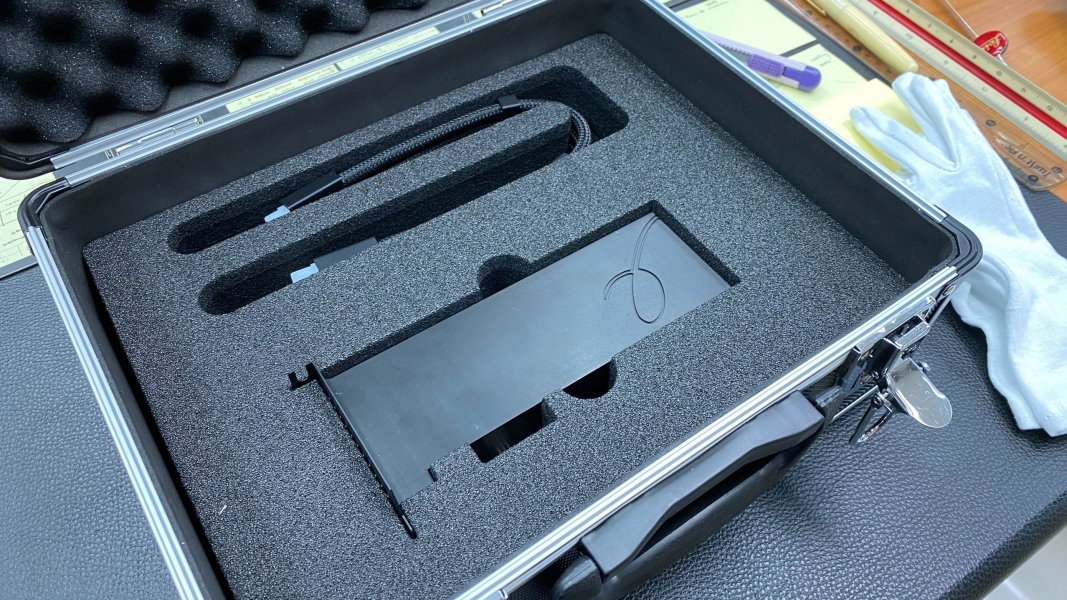
Jord just completed his first batch of 10 units and, due to my exuberance for all things Pink Faun and the trade in of my old v1 card and Ultra OCXO clock, I was luckily enough to be in this first batch. The Ultra card arrived in a solid metal case with a short power extension Molex cable and a pair of gloves. Nice marketing touch I thought, not that I would be using either the gloves nor the molex cable as my 2.16x already had inside it spare power connection wires soldered to the distribution board. The extension is actually very well made - their tinned copper in teflon PCX wiring found throughout their streamers with good Molex connections for only the 5V leg. On visual inspection, the Ultra card is also built with a similar attention to detail. As the card is thicker than a single PCIe slot, they build the card with 2 connectors to ‘book’ the space of the second slot. Interesting strategy that would serve to make the connection more sturdy and the card wobble less once the streamer cover is screwed back on. The Ultra card was designed initially to be used only in the 2.16 Ultra streamer but it seems to fit into my 2.16x (well, the connectors technically sit on top of the back panel but with some washers, this can be overcome) after Jord tweaked the case design. Initially I couldn’t get it to fit into my 2.16x but after a little adjustment to the back panel screws it fits fine now.
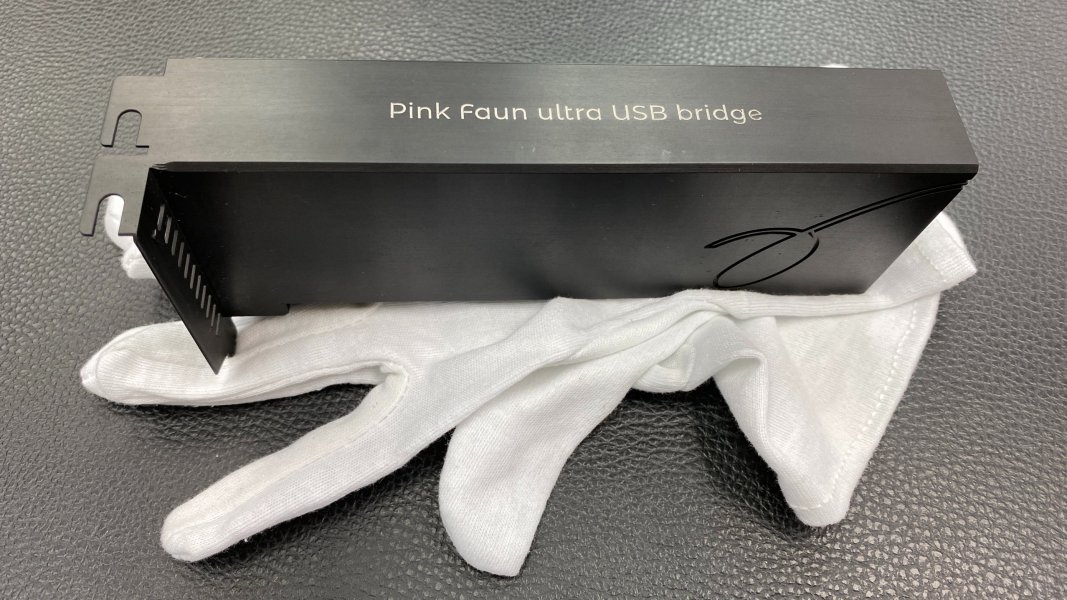
I see that in the recently updated website of Pink Faun, the technical details of the Ultra USB card is described clearly
https://www.pinkfaun.com/shop/content/43-ultra-usb-bridge and so there is no need to repeat on this matter. Only that the technology inside the card is hidden totally from the user - it’s basically plug and play. Even the charging up of the super capacitors inside happens so quickly and smoothly, it’s not noticeable during use. Once plugged in, it just works like any other bridge. Worth mentioning also is the 2.5mm DC barrel socket for external power they used in the card. Unlike the older v1 (or even v2) USB bridges, this socket fits both 2.5mm barrel plugs but also my Oyaide 2.1mm plugs as well so that comes in handy if one wants to swap external DC power cables with different plug sizes. Whether the power is supplied using an internal molex connector or through an external power cable, the power goes through the super capacitors banks. More on internal power later.

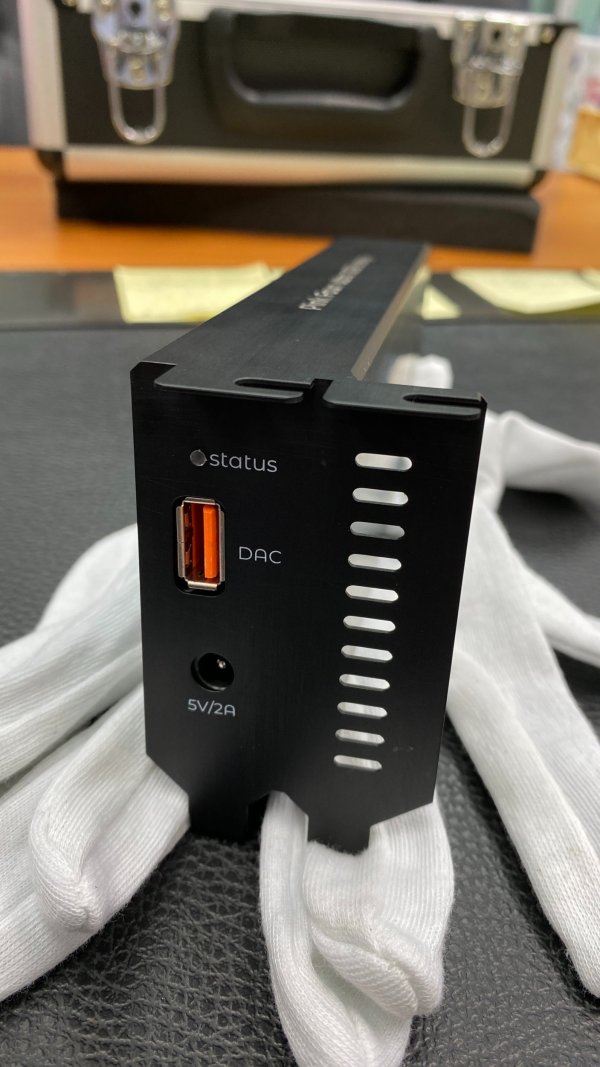 The Sound
The Sound
After a settling in period of 5 days with power constantly on but with the DAC only connected a few hours per day, I feel the sound has mostly settled into it’s final sound. Not much changed after the first 3 days. And wow, what an improvement it offers! Sometime ago, I compared my old V1 (with ultra OCXO clock) USB card with their current v2 card which I now use. There were pros and cons of each card and I liked them both depending on what kind of music it was. Later when a firmware update for the v2 came out, I switched over to the v2 card permanently as it sounded consistently better. Well, with this new Ultra USB card, it’s nothing like the difference between the v1 and v2 cards. It’s so clearly a step up from the v2 card. Right off the bat, three standout characters of this new USB Ultra card is naturalness, cleaned up lower-mids/ upper bass and focus.
I went through around a hundred of my usual favourite tracks, the sound of which I am familiar with and I’m shocked how different so many of them sound. My system to date is already pretty decent. Tweaking can bring about small incremental steps forward but to achieve this amount of step forward is an unusual experience for me. It’s not in your face different - prior to adding the Ultra card, my imaging was already spot on, details, ambience, shape of the room all very clear already. Invisible speakers, soundstage 50m deep into the room and wide outside the room boundaries already present long ago. But yet the Ultra card’s contribution has made the sound take yet another step forward.
..cont
















